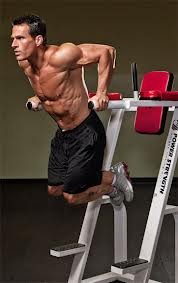The pectoralis major is the largest muscle group in the
upper body. The chest muscles are large slabs spread across the upper torso, so
the best chest workout is achieved by using heavy weights in a number of
exercises that focus on the upper, lower, inner and outer pecs.
The pecs are “pushing” muscles that tie in closely with your
arms and shoulders. When you work your chest, your triceps and deltoids also
get some work. The size, spread and depth of your pecs is directly related to
the weights used in your training regimen.
Exercises used to
develop the pecs
Bench Press –
When the chest is the topic of conversation and evaluation, the bench press is
the first exercise considered. This exercise may be performed in a variety of
ways and using different benches, grips, angles and weights.
The Olympic bar commonly used and the plates are the only
commonalities in the types of bench presses.
A wide-grip on the bar while using a flat bench is the basic
bench press. The wide grip will put more exertion on the outer pecs. Whether
the bar is lowered to the neck or to the chest will determine whether the upper
or middle of the pecs is worked.
When the bar is lowered to the middle of the chest and the
elbows are kept at the lifter’s sides, the triceps are involved in moving the
weight. When the bar is lowered to the neck and the elbows are splayed widely,
the frontal deltoids are involved with the pecs.
The bench press may be performed on an incline board and the
bar lowered to the neck. This will exercise the upper pecs. When performed on
the decline board, the lower pecs are worked.
Parallel Bar Dips
– These are very good for working the inner and upper pecs when the lifter’s
hands are at shoulder width. Placed wider, the outer pecs and delt-pec tie-in
are involved.
Dumbbell Exercises
for a Chest Workout – Dumbbells may be used for a number of bench exercises
that closely approximate the Olympic bar lifts. They may also be used to
perform flies on a flat, incline or decline bench. These are good for stretching
the pecs and ripping them up.
Cable-And-Pulley
Machine – This device is good for chest finishing exercises like the
two-handed crunch, where the exercise begins with arms spread wide and then the
handles are brought together in front of the chest, with the arms slightly bent
at the elbow.
Bent-Arm-Pullover
- This move is performed on a flat bench with the weight on the floor. The
lifter assumes a supine position and reaches back over his head for the barbell.
Keeping his arms bent, the weight is brought to the chest in a circular motion.
A compound exercise is performed when the weight is then
pressed from the chest as a close-grip bench press. The return is back to the
chest and then lowered to the floor in a circular motion.
The best chest workout
is to begin with the heavier weight exercises (bench press) and move “down the
ladder” through the barbell exercises to the dumbbells and finally to the
bodyweight resistance exercises to finish off the pecs.







